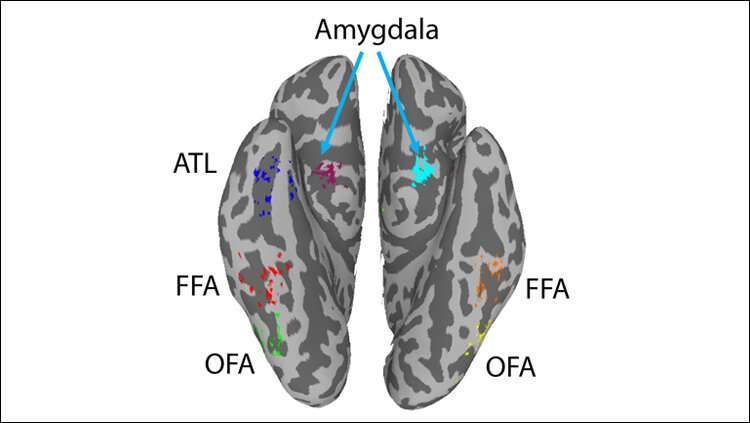Individual centers of the seven ventral face ROIs. ATL - anterior temporal lobe face region (blue), FFA - fusiform face area (right - red, left - orange), OFA - occipital face area (right - green, left - yellow). Right amygdala shown in purple, left amygdala in cyan. Credit: Ramot et al., JNeurosci (2019)
Remembering a familiar face engages a wider network of brain regions than previously thought, according to a study of healthy men and women published in JNeurosci.
First described in JNeurosci more than 20 years ago, the fusiform face area is a major component of a group of brain regions specialized for face perception known as the face network. The ability to recognize familiar faces varies, from individuals who are "face blind" to those with above-average facial recognition.
Michal Ramot and colleagues at the National Institute of Mental Health found that strength of connections within the face network were not associated with memory for faces.
By taking a broader view of the brain, the researchers demonstrate connectivity between the face network and other circuits involved in memory and processing of social, visual, and auditory information predicted participants' performance on a facial memory task.
These findings suggest face recognition involves the integration of facial features with the social and multisensory context in which they appear in everyday life.
More information: JNeurosci (2019). DOI: 10.1523/JNEUROSCI.0217-19.2019
A preprint of this manuscript has been posted on bioRxiv: www.biorxiv.org/content/10.1101/382739v1
Journal information: Journal of Neuroscience
Provided by Society for Neuroscience























